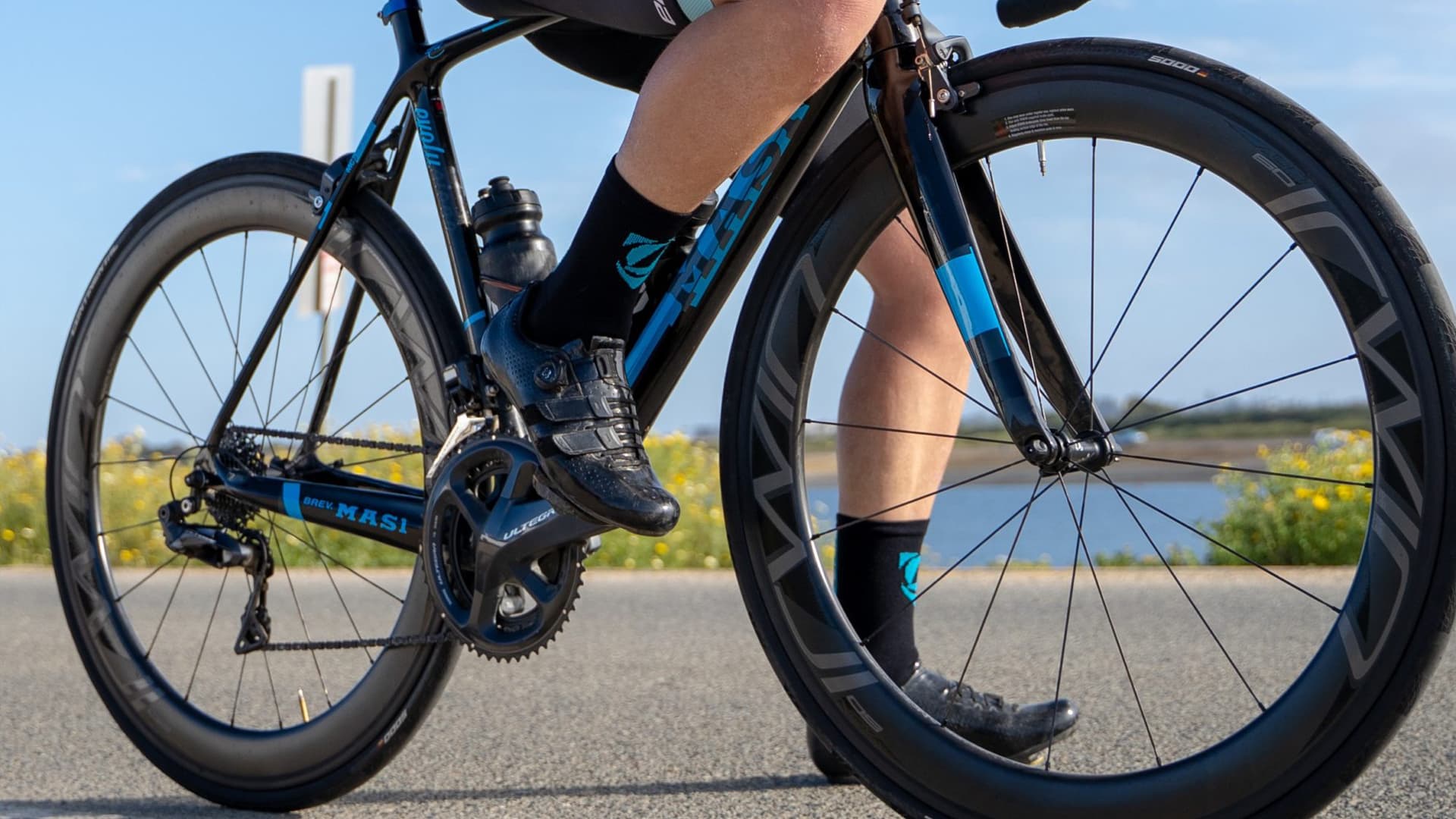Riding with IRWIN AON carbon fiber wheels
Chad DeGange is a Irwin sponsored triathlete who is trying out some road racing this year. Below he shares his experiences and lessons learned as a triathlete dipping his toes into road racing. For triathlon he’s riding the Irwin Aon TLR 60 up front aero bike wheels, and the Aon Disc carbon wheelset in back. For road racing he using the Aon TLR 60 front and back racing wheels.

I’ve been doing triathlons for over 4 years, including everything from sprint distance triathlons such as the Solana Beach Triathlon, Olympic distance races like the San Diego International Triathlon, and long course races like Ironman Boulder. I plan to do at least 3 70.3 races this year along with a few shorter races, but I’ve also been dabbling in road and criterium races. USA triathlon memberships outnumber USA Cycling memberships by around 5 to 1, so I know I can’t be the only triathlete with an interest in road racing. Here, I’ll share a little of what I’ve learned in my short road racing career.
- Road racing requires a very different type of fitness. The majority of the effort during a triathlon can often be described as “strong and steady” Road racing, especially criterium racing, requires more explosiveness than triathlon, and if you want to be a road racer, you should incorporate some explosive workouts into your routine. I learned this lesson rather quickly last year, so added these types of workouts to my off season plan.
- Starting position can be key, especially on tight criterium courses. I learned quickly that when the race is on you better be ready to go fast, or you’ll be left behind. So get to the start line early enough to claim your spot.
- You still have to get up early. You might see that some of your road racing friends don’t even start their races until well after noon. But as a new road racer, your triathlon experience doesn’t count for anything. So you’ll start at the bottom of the hierarchy, and this usually means going off first thing in the morning. Last weekend I set my alarm for 4:30 AM, hit snooze more times that I want to admit, and the drove an hour to Murrieta California. I arrived at 6:30, and hour before my race, with just enough time to register and warm up for my 40 minute race.
- Cit racing is full of split second decisions. For a triathlete, the swim is often the most chaotic part, with feet and arms flying everywhere, but the bike is usually a solitary effort, where you control your own pace and effort level. And in most triathlons, you aren’t even allowed to ride near other riders. But road races, especially criteriums are on the opposite end of the spectrum, and require constant focus. You’ve probably done some local group rides, but those still don’t compare to an actual race. Lose focus and you’ll find yourself at the back of the pack, or even worse…on the ground.
- Eventually, you are going to crash in a race. I’ve never crashed in a triathlon. I’ve never even come close. But during a criterium last weekend, I made a mistake and overlapped wheels with another rider coming out of a corner. Before I could react, our wheels locked as he slid to the middle of the road and I was slung to the ground with the rider directly behind me falling as well. My bike was banged up, my jersey was torn, and I had a little road rash, but I was still able to race the next day. Most crashes don’t result in serious injuries, but just know that crashes do happen.
- Team tactics make a huge difference. When triathletes form a team, that usually means they race for the same sponsors, train and travel together, and generally support each other. But once the race starts, there isn’t much you can do for a teammate. In road racing, the drafting and pack riding means that racers set each other up for success, chase down riders trying to escape from the pack, and work for one teammate who sits in the draft until it’s time to strike. If you don’t have a team yourself or at least learn to key off of what the other teams are doing, it’s hard to be successful. If you have some experienced road racer friends, ask them for tips on how to handle these situations.
Triathlon is still my number one sport. But adding some road racing to my schedule has helped to spice it up a little. It also helps me get in some intensity on the bike without having to do intervals. Road racing will definitely remain part of my early season program.

